Fine African coffee has an in-depth understanding of the flavor changes of various coffee producing areas in Africa.
When it comes to Africa, people's first impressions are: desert, drought, tribe, poverty, mystery and so on. Because of its climatic environment, it has become a paradise for the growth of coffee trees.
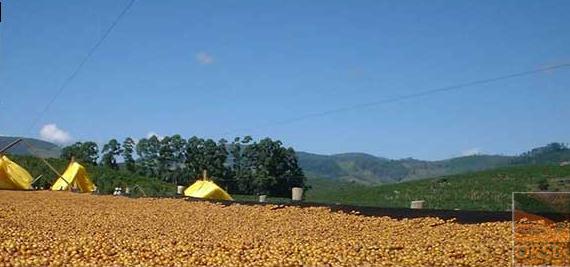
Distribution of coffee producing areas in Africa
The world's first coffee tree was found in the Horn of Africa. Local indigenous tribes often grind the fruit of coffee and knead it with animal fat to make many ball-shaped balls. These indigenous tribes use these coffee balls as precious food for soldiers who are about to go out to battle. At that time, people did not understand what it was all about when coffee eaters showed hyperactivity-they did not know that it was caused by the irritation of coffee. Instead, people regarded it as a religious fanaticism shown by coffee eaters. I think this drink is so mysterious that it has become a special product for priests and doctors.
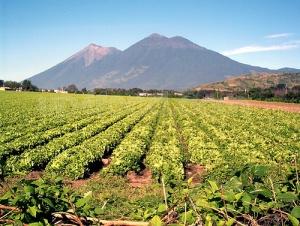
Coffee is the main cash crop in Angola, the primary export of Burundi and the largest foreign exchange earning industry in Kenya in the past. Ethiopia is known as the "hometown of coffee"; C ô te d'Ivoire occupies an important position in the world in coffee production; Uganda is famous for its production per unit area in Africa.
As the birthplace of coffee, Africa is a land full of game beans, and the continent deserves to produce some of the world's top coffee. African beans have a unique aroma, wild taste, mostly with a touch of sour red wine, such as Ethiopia's "mocha" is particularly wonderful (Hara and Tijima two producing areas with dry treatment of high-quality mocha beans, such as fruit or wine aromas, is inferior to other coffee), Yekashev coffee beans are also very good. Kenyan varieties are delicious, showing more bright and lively acidity than Arabica coffee beans in other regions. Kenya AA is a very famous top coffee bean.
Ethiopia (Ethiopia)
Ethiopia is one of the major producers of Arabica coffee in Africa, producing the best Arabian coffee in the world. It is said that coffee was first discovered by shepherds in Essekafa, and the name of coffee evolved from Kafa, which is well-deserved as the "hometown of coffee".
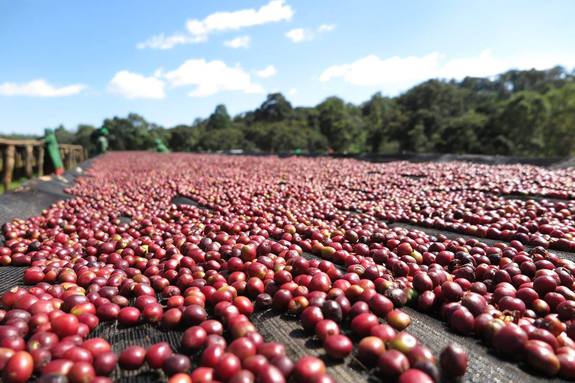
The geographical environment of Ethiopia is very suitable for coffee growth. Coffee is mainly grown in the southern highlands between 1100 and 2300 meters above sea level. The soil in these areas is well drained, slightly acidic and red loose. Currently, about 25% of the Ethiopian population depends directly or indirectly on coffee production for a living. The majority of farmers use traditional planting methods. Artificial care of coffee trees, the use of organic fertilizers, do not use harmful pesticides and herbicides, etc. Therefore, most of the coffee produced in Ethiopia is organic coffee.
The natural characteristics of coffee beans include size, shape, acidity, texture, taste and aroma. Ethiopian coffee beans are small, fragrant and sour like wine, and are loved by coffee lovers. Because of its unique aroma and taste, it is often used in the production and variety improvement of beverages, ice cream and sweets.
Due to different planting methods, coffee can be divided into three types: forest-semi-forest coffee (Forest or semi-forest coffee), courtyard coffee (Garden coffee) and plantation coffee (Plantation coffee). 60% of the coffee belongs to forest-semi-forest coffee. In such a wild coffee forest, pesticides are not used at all, but biological methods are used to control pests. 35% of the coffee is courtyard coffee. In this kind of coffee garden, the planting is three-dimensional. Coffee is located in the lower layer and gets a suitable growth environment in the shade of other crops. Fertilizers are mainly fallen leaves, withered grass and animal manure. 5% of the coffee belongs to plantation coffee. This is a modern way of growing. Coffee is also grown in a forest, but new varieties are used and planted in rows with other shade trees. Due to different processing methods, coffee can be divided into washed coffee (Washed coffee) and sun-cured coffee (Sun-dried coffee). Washed coffee accounts for 35% of exports. Good quality washed coffee is processed with freshly picked fully ripe fruit, picked carefully and closely monitored by professionals. The picked clean coffee beans are pulped on the day of picking, then fermented, washed, dried and peeled. The humidity of processed coffee beans is kept at about 12%. Sun-cured coffee accounts for 65% of exports. Mainly picked by families, red coffee beans are placed on cement floors or on high tables to dry to about 11.5% humidity, then peeled and cleaned.
The world-famous Ethiopian coffee is mainly: 1. Limu coffee grows between 1400 meters and 2000 meters above sea level. Wash the coffee. Excellent quality, with strong nut aromas, suitable acidity, with the intensity of wine. The annual output is 29000 tons. 2. Jima Coffee grows between 1400 and 1800 meters above sea level. Sun-baked coffee. Slightly sour, with nutty aromas and a long finish. The annual output is 70000 tons. 3. Gambi coffee grows between 1500 meters and 2300 meters above sea level. It is gourmet coffee with moderate acidity and fruity aroma. The annual output is 34000 tons. 4. Yerqin coffee grows from 1500 meters to 2200 meters above sea level. Mocha flavor, with floral and spicy aromas. The average annual output is about 28000 tons. 5. Sidamo Coffee grows at an altitude of 1400-2200 meters. Suitable acidity and high quality. The average annual output is about 37000 tons. 6. Harald Coffee grows on highlands above 2700 meters above sea level. It is the best coffee in the world, medium acidity, intoxicating exotic flavor, with slightly tipsy, dried fruit aroma, is pure mocha coffee. The average annual output is about 26000 tons.
Kenya (kenya)
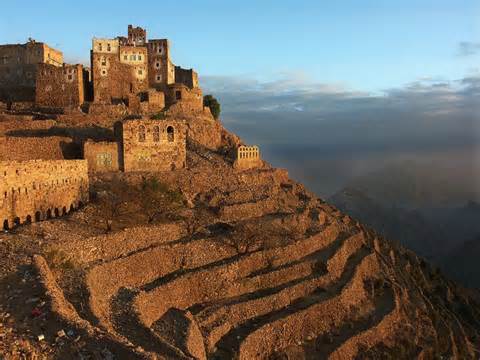
Kenya's upland washed Arabica beans are one of the best coffee in the world in terms of quality. The coffee industry in Kenya is of good quality and consistent under the strict control of the Kenya Coffee Agency. Kenyan coffee is famous for its strong fruit flavor, with lemon and citrus acid aromas.
Kenya is bordered to the north by Ethiopia, the origin of Arabica coffee trees, but it was not until the beginning of the 20th century that coffee cultivation began. In the 19th century, missionaries introduced Arabica trees from Yemen, but did not plant them in large quantities. It was not until 1893 that coffee was cultivated on a large scale after the introduction of Brazil's ancient bourbon seeds. That is to say, Kenyan coffee is of Brazilian origin. Due to the differences in water, climate and handling, the taste of Kenyan beans is very different from that of Brazilian beans.
Kenyan coffee trees are mainly concentrated on the slopes near Mount Kenya, about 4 to 6500 feet above sea level, which is the best height for coffee beans to develop their flavor, because the mountain temperature is lower, the growth is slower, and the aromatic components of coffee beans are fully developed. the acidity is more obvious and the texture is harder. In addition, Kenya was an early British colony, and the British had established a set of perfect cultivation and quality control system. After the independence of Kenya, the coffee industry has made great strides on the existing basis, and has become the largest foreign exchange earning industry in Kenya.
Kenya beans must have a strict grading system. Coffee beans taken out by washing plants are divided into seven grades according to size, shape and hardness, the highest being AA or AA, followed by AB, PB, C, TT and T. This grading system is similar to Colombia, mainly in terms of particle size and shape, but it does not necessarily have the best flavor.
Tanzania (Tanzania)
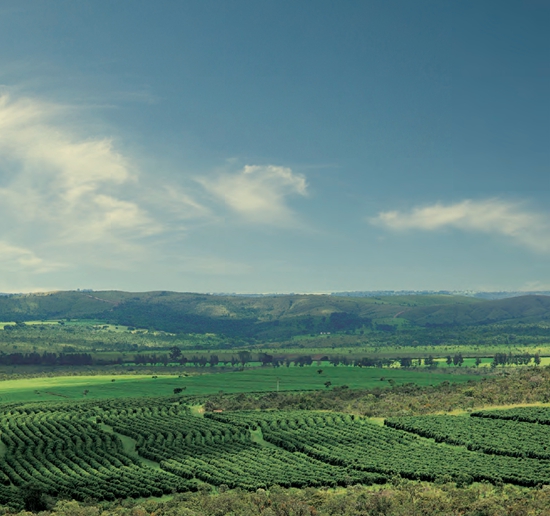
Tanzania is a typical East African country, bordering Kenya and Uganda to the north, Malawi, Mozambique and Zambia to the south, and Rwanda and Burundi to the west. Many people like to compare Tanzanian coffee with his neighbor Kenya. Compared with Kenyan high-quality coffee beans, Tanzanian coffee has less bright acidity, softer beauty and more sweetness. The strong smell of red wine is also a characteristic of Tanzania. Coffee beans in Tanzania are of extraordinary quality. They are produced in the Mohi district near Mount Kilimanjaro. The mountains with a height of 3,000 to 6,000 feet are the most suitable areas for growing coffee. The fertile volcanic ash gives the coffee here a strong texture and soft acidity. It exudes delicate aromas and contains aromas of wine and fruit, making people taste endless aftertaste. After drinking Tanzanian coffee, I always feel a soft and mellow earthy smell at the corners of my mouth. Coffee gourmets often use words such as "wild" or "wild" to describe it. It can be said that pure Tanzanian coffee is "the most African coffee". Tanzania AA is the highest grade of beans, its grains are full, pure flavor, rich and refreshing, all aspects of quality are good. Usually it is mildly acidic and evenly stimulates the taste buds in the middle and sides of the back of the tongue, feeling a bit like the sour taste of tomato or soda. After moderate or more moderate baking, it has a strong aroma, then grind it into a fine powder, soak it in a pot of boiling water, invite friends to sit around and taste it, and suddenly feel fragrant and full of tongue. its quality is much better than the instant coffee we often drink. Tanzanian coffee has long been loved by Europeans and has joined the ranks of famous products. Europeans give Tanzanian coffee the nickname "coffee gentleman".
C ô te d'Ivoire (CoastIvory)
C ô te d'Ivoire is an agricultural country rich in cocoa and coffee, accounting for 60 per cent of the country's arable land, more than 4 million people engaged in cocoa and coffee business activities, accounting for 25 per cent of the country's population, annual output value accounts for 10 per cent of GDP, and 30-40 per cent of national tax revenue comes from the cocoa coffee production industry. The cocoa and coffee industries play an important role in the economy of Cote d'Ivoire, and their ups and downs affect the pulse of the entire economy of C ô te d'Ivoire.
At present, C ô te d'Ivoire is the second largest coffee producer in Africa. The quality of coffee in C ô te d'Ivoire is quite average, and its supply is stable and reliable. Its famous Robesda Coffee is one of the indispensable beans for roasters in the world.
Zimbabwe (Zimbabwe) Zimbabwe is famous for its coffee as well as tobacco.
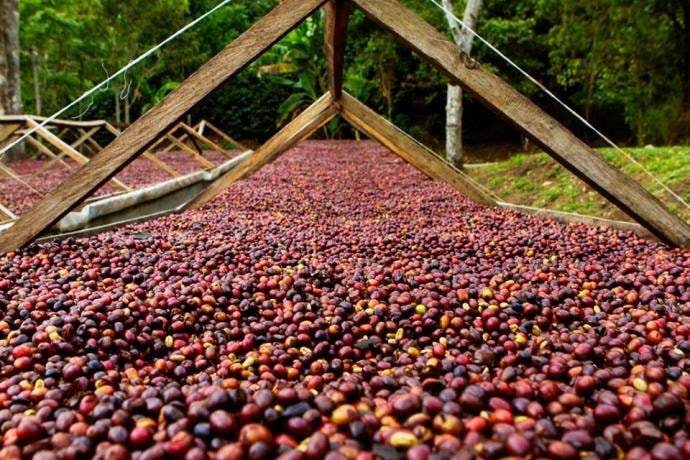
Coffee cultivation in Zimbabwe began relatively recently, in the 1960s, when farmers in southern Africa set up coffee plantations. The sour and fruity flavors of Zimbabwean coffee are similar to those of Kenyan coffee, but the concentration is higher and the wine flavor and flavor are stronger than Kenyan coffee. The coffee-growing areas of Zimbabwe are mainly distributed in the northeast of the Chimanimani Mountains. The mountain range is located near the border between Zimbabwe and Mozambique, especially the Qipingka, which is located on the eastern plateau. In addition, Pinacol, Papir, Lalus and so on, are also a handful of large farms. Among the eight famous farms, Pinacol Farm is almost so picky about its coffee beans that it can no longer be picky. As for Papir Farm, because of its very small scale, the planting method can even be called a "family handicraft workshop". The farm rejects any defects and is known for its absolute rigour, and only coffee beans that are considered perfect can pass the test.
Ethiopia (Ethiopia) the highlands of Ethiopia are the birthplace of coffee. The traditional drying method is still used to produce mocha-Hara beans (Harrar,Harari,Harer or Harar) at an altitude of about 2,000 meters near Harrar in the east. Hara has a medium texture and a fruity flavor, and a good Hara is as wild as the best Yemeni mocha. Dried beans from other regions, such as Gimbi or Ghimbi, Jima,Jimma or Djimah and Sidamo, are equally wild and wine-like, but not so rich and a little rough. The water-washed mocha from Jinbi in the west has the same sour wine as Hara, but it is packaged with a richer and balanced feel and a thicker texture. As for water-washed beans from the south, such as Sidamo and Gemma, they keep less sour wine and replace them with more gentle and delicate flavours of lemon and flowers. The best product is produced in a high and narrow area of Sidamone, called Yirgacheffe, whose rich taste brushes the taste buds and leaves an endless aftertaste, while the slightly sour taste is similar to Sumatra, swimming under the rich texture; in addition, it adds a unique soft floral fragrance, which is really the only coffee in the world.
Uganda (Uganda) produces a pretty good Arabica bean, called Bugisu or Bugishu, on the western slope of the Egon Mountains (Mr. Elgon) near the Kenyan border in the east. The flavor is similar to Kenya, but the texture is thinner. The official ranks are Oaganic (Organic), BugisuAA, BugisuA, BugisuB, Bugisu PB, Wugar, Drugar and other unlisted grades. To find Ugandan coffee with good performance, you must first recognize the three grades of BugisuAA, An and PB, but because the country is inland and has many transportation problems, it often comes to raw beans with low moisture content and not emerald green appearance, but Ugandan coffee is not a type of coffee that emphasizes aroma, as long as the raw beans are not and turn 100 or yellowed, they can generally have a good flavor performance in the producing areas. It has a low ripe fruit aroma, such as the taste of red wine, and a thick mellow thickness, which is similar to some Kenyan beans with low tone, but with a mild soil flavor, so it is quite different from other East African countries in flavor characteristics. on the contrary, it is somewhat similar to Asian Indonesian Sulawesi Tonaga coffee and Java state-owned manor coffee. The baking degree between City and Full City is all better.
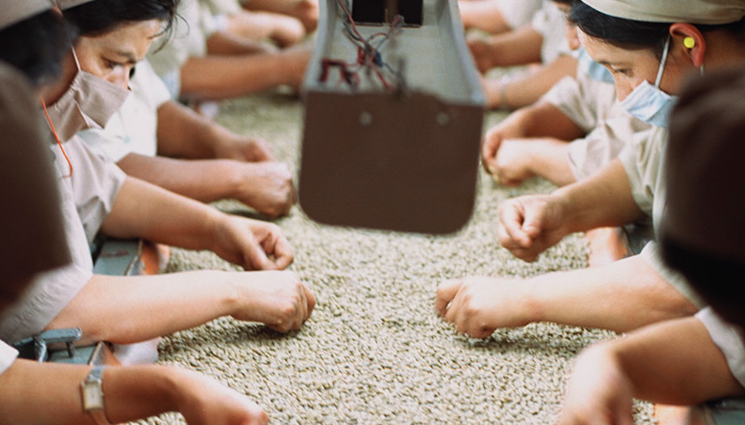
Angola (Angola), the fourth largest coffee industry in the world, produces only a small amount of Arabian coffee, which is of high quality, but unfortunately, its annual output is extremely unstable due to its political unrest. 98% of the coffee in Angola is Roberts coffee. The best brands in Angola used to be Ambriz, Amborm and NovoRedondo, all of which are known for their consistent quality. Angolan coffee is famous for its high acidity.
Source: network
Important Notice :
前街咖啡 FrontStreet Coffee has moved to new addredd:
FrontStreet Coffee Address: 315,Donghua East Road,GuangZhou
Tel:020 38364473
- Prev
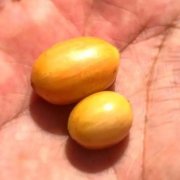
Where is the secret of delicious Maracaturra beans, Nicaraguan Maracatula coffee beans?
The Nicaraguan Maracatula coffee beans used by Starbucks are bigger than the usual Nicaraguan coffee beans. Well, in the grand plan of things, I realized they were still very
- Next
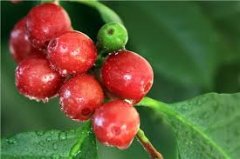
Introduction to the Flavor of Coffee Bean production method in Ethiopia Valley Jikor Shamakanisha treatment Plant
Mokanisha processing Plant is part of Israel Degfa, the owner of a very large-scale coffee business in Ethiopia. Many parts of Ethiopia (Yega, Guji, etc.) have more than 20 studios at an altitude of 1900-2300 meters above sea level. Hundreds of small farmers near the Mokanisha treatment plant deliver bright red ripe berries harvested manually every day.
Related
- What documents do you need to go through to open a coffee shop? coffee shop coffee shop certificate processing process
- How to purchase Coffee beans in small Cafe how to choose a suitable supplier for domestic Coffee supply Company
- How to drink Starbucks Fragrance White Coffee? how to make Australian White Coffee? what Italian coffee beans are recommended?
- The Story of Flora Coffee: the name of Flora Coffee Bean and the implication of the Flowers on Florna Coffee
- How much does a cup of coffee cost? How much is the profit of a cup of coffee? What is the profit of the coffee shop in a year?
- Yunnan small Coffee, known as "fragrant Coffee", introduces the characteristics of Alpine Arabica Coffee producing areas in Yunnan, China
- 2023 latest Starbucks full menu price list how much is a cup of Starbucks coffee what is better to drink the most popular hot and cold drinks recommended
- Starbucks different kinds of Coffee Price list Starbucks menu 2023 Top Ten Best drinks in Starbucks
- Starbucks Spring praise Comprehensive matching Coffee Bean theme Story Packaging implication and taste description
- The cost of a cup of coffee latte American coffee cost price and selling price

